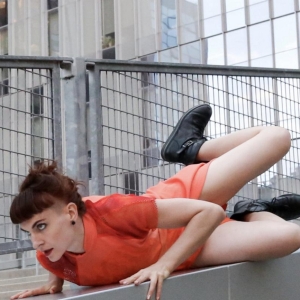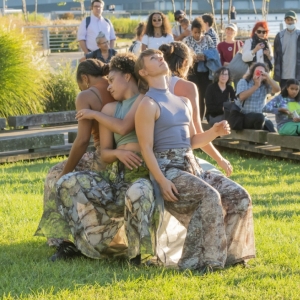
At a Glance
Time Needed: 240 min.
Ages: 12+
Allows Food/Drink: No
Luggage Storage: No
99 Margaret Corbin Dr, New York, NY 10040 Get Directions
The Cloisters Videos
Stephan Wolohojian, John Pope-Hennessy Curator in Charge, Department of European Paintings, The Met Sarah Guérin, Associate Professor, History of Art, University of Pennsylvania C. Griffith Mann, Michel David-Weill Curator in Charge, Department of Medieval Art and The Cloisters, The Met Join us to discuss the exhibition Siena: The Rise of Painting, 1300–1350 and gain insight into this exceptional moment at the dawn of the Italian Renaissance and the phenomenal artistic activity of 14th-century Siena. Learn about innovations in painting technique and the significance of materials through presentations and conversation with art historians. Presented in conjunction with the exhibition Siena: The Rise of Painting, 1300–1350. Free with Museum admission, though advance registration is required. Please note: Space is limited; first come, first served. Subscribe for new content from The Met: https://www.youtube.com/user/metmuseum #TheMet #Art #TheMetropolitanMuseumofArt #Museum © 2024 The Metropolitan Museum of Art
Llewellyn Sánchez-Werner and Derek Wang play “Pas des cymbales, Op. 36, No. 2” by Cécile Chaminade. This piece was played on The Met’s Grand Piano (1993.292) made by Carl Bechstein, ca.1893, Gift of Schonberger Family Foundation, 1993, and The Met’s La Mort du Cygne Grand Piano (2022.473) made by Sebastian Érard, Louis Majorelle and Victor Emile Prouvé, 1903-4, Gift of Yvette and Allen Michaan, 2022. This piece was recorded at "Dynamic Duos: Two Met Pianos, Two YoungArts Pianists" on Monday, October 7, 2024 in the Patron’s Lounge of The Metropolitan Museum of Art. This program was made possible by Friends of Musical Instruments: The Amati. Both Llewellyn Sánchez-Werner and Derek Wang are alumni of the YoungArts program. For more information about these instruments please visit the following webpages: Bechstein Piano: https://www.metmuseum.org/art/collection/search/503448. Érard Piano: https://www.metmuseum.org/art/collection/search/890779. Subscribe for new content from The Met: https://www.youtube.com/user/metmuseum #TheMet #Art #TheMetropolitanMuseumofArt #Museum © 2024 The Metropolitan Museum of Art
Llewellyn Sánchez-Werner and Derek Wang play “Suite No. 1 (Fantaisie-tableaux) for two pianos, op. 5” by Sergei Vasilyevich Rachmaninoff. This piece was played on The Met’s Grand Piano (1993.292) made by Carl Bechstein, ca.1893, Gift of Schonberger Family Foundation, 1993, and The Met’s La Mort du Cygne Grand Piano (2022.473) made by Sebastian Érard, Louis Majorelle and Victor Emile Prouvé, 1903-4, Gift of Yvette and Allen Michaan, 2022. This piece was recorded at "Dynamic Duos: Two Met Pianos, Two YoungArts Pianists" on Monday, October 7, 2024 in the Patron’s Lounge of The Metropolitan Museum of Art. This program was made possible by Friends of Musical Instruments: The Amati. Both Llewellyn Sánchez-Werner and Derek Wang are alumni of the YoungArts program. For more information about these instruments please visit the following webpages: Bechstein Piano: https://www.metmuseum.org/art/collection/search/503448. Érard Piano: https://www.metmuseum.org/art/collection/search/890779. Subscribe for new content from The Met: https://www.youtube.com/user/metmuseum #TheMet #Art #TheMetropolitanMuseumofArt #Museum © 2024 The Metropolitan Museum of Art
Llewellyn Sánchez-Werner and Derek Wang play selections from the “Petite Suite, L 65” by Claude Debussy on The Met’s La Mort du Cygne Grand Piano (2022.473) made by Sebastian Érard, Louis Majorelle and Victor Emile Prouvé, 1903-4, Gift of Yvette and Allen Michaan, 2022. This piece was recorded at "Dynamic Duos: Two Met Pianos, Two YoungArts Pianists" on Monday, October 7, 2024 in the Patron’s Lounge of The Metropolitan Museum of Art. This program was made possible by Friends of Musical Instruments: The Amati. Both Llewellyn Sánchez-Werner and Derek Wang are alumni of the YoungArts program. For more information about this instrument please visit the following webpage: https://www.metmuseum.org/art/collection/search/890779. Subscribe for new content from The Met: https://www.youtube.com/user/metmuseum #TheMet #Art #TheMetropolitanMuseumofArt #Museum © 2024 The Metropolitan Museum of Art
Llewellyn Sánchez-Werner and Derek Wang play selections from “Sixteen Waltzes, op. 39” by Johannes Brahms on The Met’s Grand Piano (1993.292) made by Carl Bechstein, ca.1893, Gift of Schonberger Family Foundation, 1993. This piece was recorded at "Dynamic Duos: Two Met Pianos, Two YoungArts Pianists" on Monday, October 7, 2024 in the Patron’s Lounge of The Metropolitan Museum of Art. This program was made possible by Friends of Musical Instruments: The Amati. Both Llewellyn Sánchez-Werner and Derek Wang are alumni of the YoungArts program. For more information about this instrument please visit the following webpage: https://www.metmuseum.org/art/collection/search/503448
Subscribe for new content from The Met: https://www.youtube.com/user/metmuseum #TheMet #Art #TheMetropolitanMuseumofArt #Museum © 2024 The Metropolitan Museum of Art
More in Inwood
More Attractions
- Empire State Building
- The Vessel
- Madison Square Garden
- The Edge
- Statue of Liberty & Ellis Island
- 9/11 Tribute Museum
- One World Observatory
- The Oculus
- The High Line
- St. Patrick's Cathedral
The Cloisters Frequently Asked Questions
The closest subway stops to The Cloisters at 99 Margaret Corbin Dr in New York City are the A train at 190th Street and the 1 train at 191st Street. Both stations are located in the Washington Heights neighborhood of Manhattan, just a short walk away from the museum.
If you're planning to visit The Cloisters, I highly recommend taking some time to explore the beautiful Fort Tryon Park, which surrounds the museum. It offers stunning views of the Hudson River and is a great spot for a picnic or a leisurely stroll. You can also check out the Heather Garden within the park, which is known for its vibrant flowers and serene atmosphere.
For the latest subway updates and service changes, I recommend checking the official website of the Metropolitan Transportation Authority (MTA) at https://new.mta.info/. This will provide you with real-time information on any delays or disruptions that may affect your journey.
Enjoy your visit to The Cloisters and have a wonderful time exploring this hidden gem in New York City!
The Cloisters, located at 99 Margaret Corbin Dr in New York City, is a beautiful museum and garden that showcases medieval art and architecture. While there are no bus stops directly in front of The Cloisters, there are several nearby options that will get you close to your destination.
The closest bus stop to The Cloisters is the one at Fort Tryon Park, which is served by the M4 bus. This stop is located at the intersection of Cabrini Boulevard and Fort Washington Avenue, just a short walk from The Cloisters. You can check for updates on the M4 bus schedule and route on the official MTA website: MTA.info.
Another option is to take the M100 bus, which stops at the intersection of Broadway and 190th Street. From there, it's about a 15-minute walk to The Cloisters. You can find the latest information on the M100 bus schedule and route on the MTA website as well.
If you prefer to use a mapping app to plan your journey, I recommend using Google Maps or the MTA's official app, called "MTA Subway Time." These apps provide real-time updates on bus routes, schedules, and any service changes.
Remember to check for any updates or changes to bus routes before your visit, as schedules can vary. Enjoy your trip to The Cloisters and have a wonderful time exploring the medieval treasures it has to offer!
The Cloisters, located in Fort Tryon Park, is a unique museum that showcases medieval European art and architecture. To fully appreciate this gem, I recommend planning to spend at least half a day there. This will allow you ample time to explore the museum's stunning collection, stroll through the serene gardens, and soak in the peaceful atmosphere.
With its tranquil setting overlooking the Hudson River, The Cloisters offers a welcome escape from the hustle and bustle of the city. Take your time to wander through the various galleries, admiring the intricate tapestries, illuminated manuscripts, and exquisite sculptures. Don't miss the famous Unicorn Tapestries, which are a highlight of the collection.
After immersing yourself in the art, make sure to explore the beautiful gardens surrounding The Cloisters. They are designed to evoke the spirit of medieval Europe and provide a serene backdrop for contemplation or a leisurely stroll.
If you have more time to spare, consider joining one of the museum's guided tours or attending a special exhibition or event. The Cloisters often hosts lectures, concerts, and workshops that further enhance the visitor experience.
Remember to check the museum's website for any updates on opening hours and ticketing information. And don't forget to bring your camera to capture the stunning views and architectural details!
In conclusion, to fully appreciate the beauty and tranquility of The Cloisters, plan to spend at least half a day exploring the museum, gardens, and taking in the atmosphere. Enjoy your visit!
The Cloisters, located in northern Manhattan, is a branch of the Metropolitan Museum of Art dedicated to the art and architecture of medieval Europe. While The Cloisters does not have a restaurant or café on-site, visitors are welcome to bring their own food and enjoy a picnic in the beautiful gardens surrounding the museum. There are also several nearby parks and green spaces where you can sit and enjoy a meal. Just be sure to clean up after yourself and dispose of any trash properly. Please note that alcoholic beverages are not permitted on the grounds of The Cloisters.
The Cloisters, located in Fort Tryon Park in Upper Manhattan, is a museum dedicated to medieval art and architecture. While it does not have its own luggage storage facilities, there are a few options available to visitors.
If you are traveling with a small bag or backpack, you can bring it with you into the museum. However, larger bags, suitcases, or items that may be considered cumbersome are not permitted inside. It's always a good idea to check the museum's website or contact their visitor services for any specific guidelines or restrictions.
If you need to store your luggage while visiting The Cloisters, there are several luggage storage services available throughout the city. These services typically charge a fee per bag and offer secure storage options. Some popular luggage storage companies in New York City include Vertoe, LuggageHero, and Schwartz Luggage Storage.
Alternatively, if you are staying at a hotel in the city, you can inquire with the front desk about storing your luggage there. Many hotels offer luggage storage services for their guests, even after check-out.
Remember to plan ahead and check the specific policies of the museum or storage service you choose to ensure a smooth and hassle-free visit to The Cloisters.
Absolutely! The Cloisters is a wonderful destination for visitors from other countries and non-English language speakers. Located in Fort Tryon Park, this branch of the Metropolitan Museum of Art is dedicated to the art and architecture of medieval Europe. Its serene atmosphere, stunning gardens, and breathtaking views of the Hudson River make it a must-visit spot for tourists.
While English is the primary language spoken at The Cloisters, the museum provides multilingual audio guides in several languages, including Spanish, French, German, Italian, and Japanese. These guides offer detailed explanations of the artwork and historical context, ensuring that non-English speakers can fully appreciate the exhibits.
Additionally, The Cloisters' visual nature allows visitors to appreciate the beauty of the artwork and architecture without relying solely on language. The intricate tapestries, ornate sculptures, and meticulously crafted stained glass windows speak to the artistic mastery of the medieval period, transcending language barriers.
Overall, The Cloisters offers a unique and enriching experience for visitors from all over the world, regardless of their language proficiency. It's a place where art and history come alive, and where the beauty of the medieval era can be appreciated by all.
The Cloisters, located in Fort Tryon Park in Upper Manhattan, is a branch of the Metropolitan Museum of Art dedicated to medieval art and architecture. While there is no strict age restriction, the recommended age range for visitors to The Cloisters is generally 12 years and older. The museum's exhibits and collections may be more appreciated by older children and adults who have an interest in art history and medieval culture. However, younger children can still enjoy the beautiful gardens and the peaceful atmosphere of the park surrounding The Cloisters.
Videos
.png)














